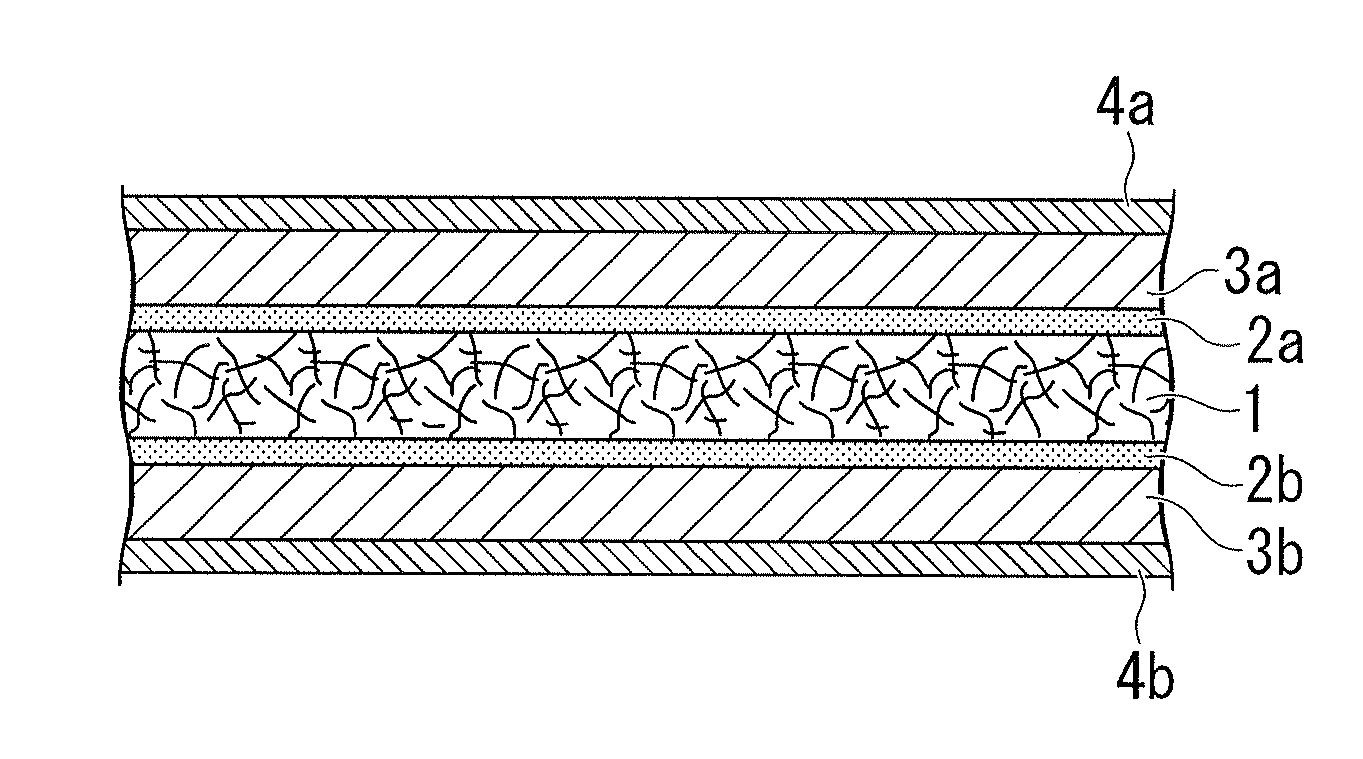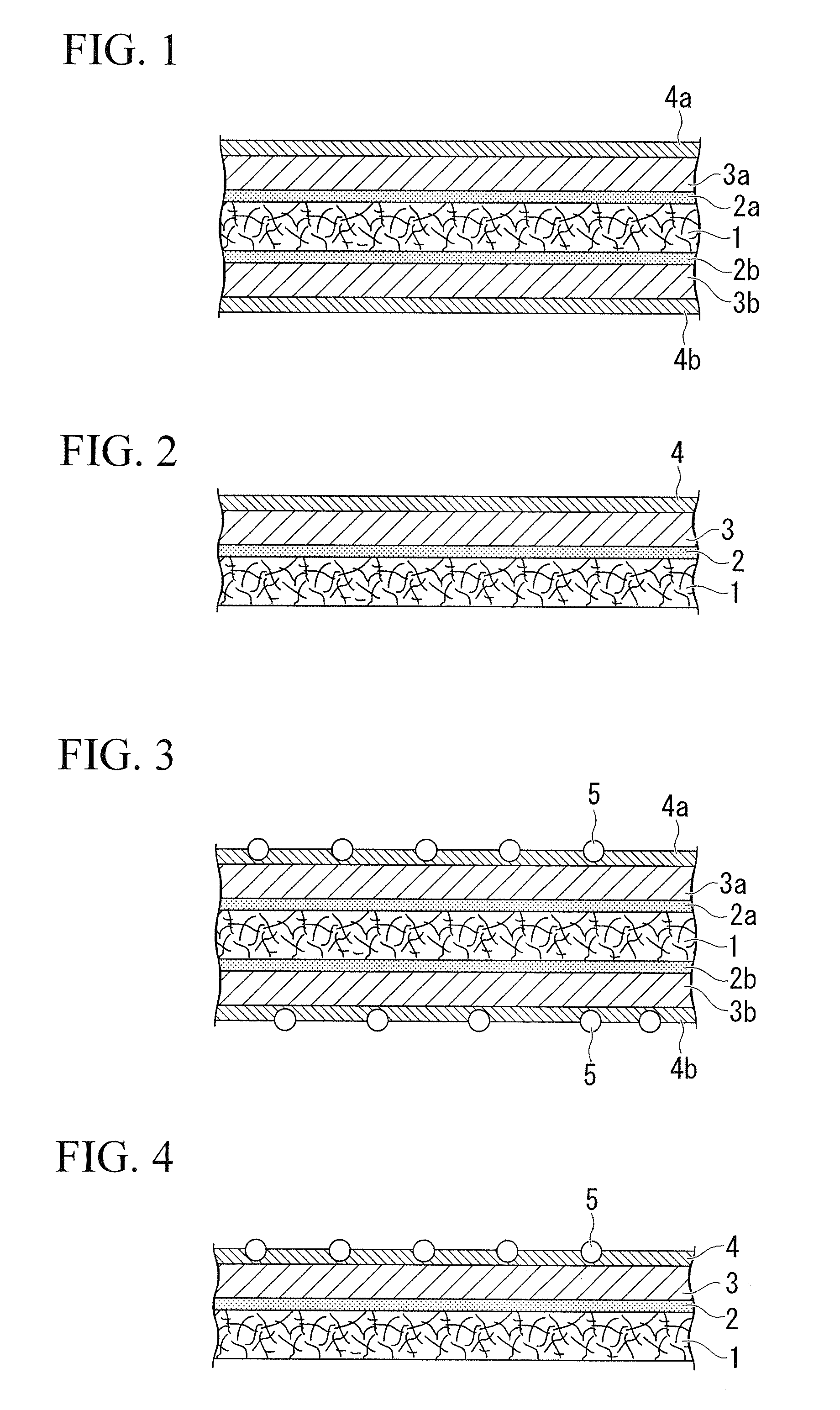Water-Resistant Image-Receiving Sheet For Electrophography
a technology for electrophotography and image receipt, which is applied in the direction of cellulosic plastic layered products, instruments, synthetic resin layered products, etc., can solve the problems of inferior fouling properties, weakening of toner fixing properties, and printing is done on paper, so as to achieve excellent toner fixing properties and transfer properties, beautiful high quality images, and excellent durability
- Summary
- Abstract
- Description
- Claims
- Application Information
AI Technical Summary
Benefits of technology
Problems solved by technology
Method used
Image
Examples
example 1
[0122]The adhesive described above was coated on the uncoated surface of the transparent PET film in which toner-receiving layer (a) was formed by gravure printing method, so that the solid content was 10 g / m2. The thickness of the adhesive layer was 9 μm, and the surface resistance of the adhesive layer was 5×1010 Ω / □. The adhesive layer of the PET film was adhered to the both surfaces of base paper (A) one side by one side by a dry lamination method to obtain the image-receiving sheet for electrophotography.
examples 2 to 6
, COMPARATIVE EXAMPLES 1 TO 4
[0123]The transparent PET films in which toner-receiving layers (b) to (i) were formed respectively were adhered to base paper (A) or (B) with the combinations shown in Table 1 in the same manner as described in Example 1.
(Evaluation of Characteristics)
[0124]The image-receiving sheets for electrophotograpy obtained from the Examples and Comparative Examples were cut into A4 size to carry out color printing using the color copy machine (manufactured by RICOH Co., Ltd., product name : IPSIO CX7200). Various characteristics of the printed matter were evaluated. Methods of the evaluations are as follows.[0125](1) Water-resistance: water-resistance was evaluated using the impregnation degree of water from the edge surfaces. The measurement was carried out as follows. The image-receiving sheets for electrophotograpy were cut into a size of 4 cm×4 cm, and soaked in a red liquid ink (manufactured by PILOT Co., product name: PILOT® ink / red ink was diluted to 100 ...
example 7
[0144]The adhesive was coated on the uncoated surface of the transparent PET film in which toner-receiving layer (j) was formed by a gravure printing method so that the solid content was 10 g / m2. The thickness of the adhesive layer was 9 μm, the surface of the adhesive layer was 5×1010 Ω / □. The adhesive layer of the transparent PET film was adhered to both surfaces of base paper (A) one side by one side by a lamination method to obtain the image-receiving sheet for electrophotography.
PUM
| Property | Measurement | Unit |
|---|---|---|
| glass transition temperature | aaaaa | aaaaa |
| transition temperature | aaaaa | aaaaa |
| particle diameter | aaaaa | aaaaa |
Abstract
Description
Claims
Application Information
 Login to View More
Login to View More - R&D
- Intellectual Property
- Life Sciences
- Materials
- Tech Scout
- Unparalleled Data Quality
- Higher Quality Content
- 60% Fewer Hallucinations
Browse by: Latest US Patents, China's latest patents, Technical Efficacy Thesaurus, Application Domain, Technology Topic, Popular Technical Reports.
© 2025 PatSnap. All rights reserved.Legal|Privacy policy|Modern Slavery Act Transparency Statement|Sitemap|About US| Contact US: help@patsnap.com


